Barclays 2014 Annual Report Download - page 7
Download and view the complete annual report
Please find page 7 of the 2014 Barclays annual report below. You can navigate through the pages in the report by either clicking on the pages listed below, or by using the keyword search tool below to find specific information within the annual report.-
 1
1 -
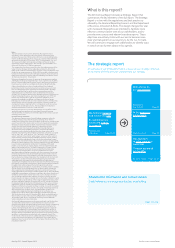 2
2 -
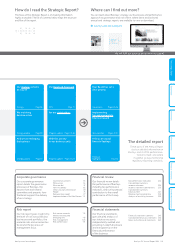 3
3 -
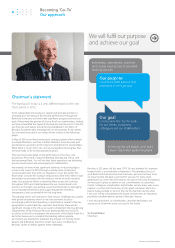 4
4 -
 5
5 -
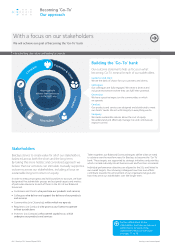 6
6 -
 7
7 -
 8
8 -
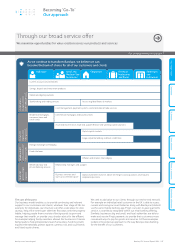 9
9 -
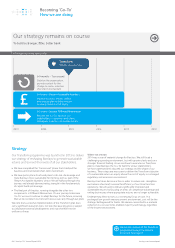 10
10 -
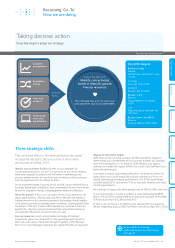 11
11 -
 12
12 -
 13
13 -
 14
14 -
 15
15 -
 16
16 -
 17
17 -
 18
18 -
 19
19 -
 20
20 -
 21
21 -
 22
22 -
 23
23 -
 24
24 -
 25
25 -
 26
26 -
 27
27 -
 28
28 -
 29
29 -
 30
30 -
 31
31 -
 32
32 -
 33
33 -
 34
34 -
 35
35 -
 36
36 -
 37
37 -
 38
38 -
 39
39 -
 40
40 -
 41
41 -
 42
42 -
 43
43 -
 44
44 -
 45
45 -
 46
46 -
 47
47 -
 48
48 -
 49
49 -
 50
50 -
 51
51 -
 52
52 -
 53
53 -
 54
54 -
 55
55 -
 56
56 -
 57
57 -
 58
58 -
 59
59 -
 60
60 -
 61
61 -
 62
62 -
 63
63 -
 64
64 -
 65
65 -
 66
66 -
 67
67 -
 68
68 -
 69
69 -
 70
70 -
 71
71 -
 72
72 -
 73
73 -
 74
74 -
 75
75 -
 76
76 -
 77
77 -
 78
78 -
 79
79 -
 80
80 -
 81
81 -
 82
82 -
 83
83 -
 84
84 -
 85
85 -
 86
86 -
 87
87 -
 88
88 -
 89
89 -
 90
90 -
 91
91 -
 92
92 -
 93
93 -
 94
94 -
 95
95 -
 96
96 -
 97
97 -
 98
98 -
 99
99 -
 100
100 -
 101
101 -
 102
102 -
 103
103 -
 104
104 -
 105
105 -
 106
106 -
 107
107 -
 108
108 -
 109
109 -
 110
110 -
 111
111 -
 112
112 -
 113
113 -
 114
114 -
 115
115 -
 116
116 -
 117
117 -
 118
118 -
 119
119 -
 120
120 -
 121
121 -
 122
122 -
 123
123 -
 124
124 -
 125
125 -
 126
126 -
 127
127 -
 128
128 -
 129
129 -
 130
130 -
 131
131 -
 132
132 -
 133
133 -
 134
134 -
 135
135 -
 136
136 -
 137
137 -
 138
138 -
 139
139 -
 140
140 -
 141
141 -
 142
142 -
 143
143 -
 144
144 -
 145
145 -
 146
146 -
 147
147 -
 148
148 -
 149
149 -
 150
150 -
 151
151 -
 152
152 -
 153
153 -
 154
154 -
 155
155 -
 156
156 -
 157
157 -
 158
158 -
 159
159 -
 160
160 -
 161
161 -
 162
162 -
 163
163 -
 164
164 -
 165
165 -
 166
166 -
 167
167 -
 168
168 -
 169
169 -
 170
170 -
 171
171 -
 172
172 -
 173
173 -
 174
174 -
 175
175 -
 176
176 -
 177
177 -
 178
178 -
 179
179 -
 180
180 -
 181
181 -
 182
182 -
 183
183 -
 184
184 -
 185
185 -
 186
186 -
 187
187 -
 188
188 -
 189
189 -
 190
190 -
 191
191 -
 192
192 -
 193
193 -
 194
194 -
 195
195 -
 196
196 -
 197
197 -
 198
198 -
 199
199 -
 200
200 -
 201
201 -
 202
202 -
 203
203 -
 204
204 -
 205
205 -
 206
206 -
 207
207 -
 208
208 -
 209
209 -
 210
210 -
 211
211 -
 212
212 -
 213
213 -
 214
214 -
 215
215 -
 216
216 -
 217
217 -
 218
218 -
 219
219 -
 220
220 -
 221
221 -
 222
222 -
 223
223 -
 224
224 -
 225
225 -
 226
226 -
 227
227 -
 228
228 -
 229
229 -
 230
230 -
 231
231 -
 232
232 -
 233
233 -
 234
234 -
 235
235 -
 236
236 -
 237
237 -
 238
238 -
 239
239 -
 240
240 -
 241
241 -
 242
242 -
 243
243 -
 244
244 -
 245
245 -
 246
246 -
 247
247 -
 248
248 -
 249
249 -
 250
250 -
 251
251 -
 252
252 -
 253
253 -
 254
254 -
 255
255 -
 256
256 -
 257
257 -
 258
258 -
 259
259 -
 260
260 -
 261
261 -
 262
262 -
 263
263 -
 264
264 -
 265
265 -
 266
266 -
 267
267 -
 268
268 -
 269
269 -
 270
270 -
 271
271 -
 272
272 -
 273
273 -
 274
274 -
 275
275 -
 276
276 -
 277
277 -
 278
278 -
 279
279 -
 280
280 -
 281
281 -
 282
282 -
 283
283 -
 284
284 -
 285
285 -
 286
286 -
 287
287 -
 288
288 -
 289
289 -
 290
290 -
 291
291 -
 292
292 -
 293
293 -
 294
294 -
 295
295 -
 296
296 -
 297
297 -
 298
298 -
 299
299 -
 300
300 -
 301
301 -
 302
302 -
 303
303 -
 304
304 -
 305
305 -
 306
306 -
 307
307 -
 308
308 -
 309
309 -
 310
310 -
 311
311 -
 312
312 -
 313
313 -
 314
314 -
 315
315 -
 316
316 -
 317
317 -
 318
318 -
 319
319 -
 320
320 -
 321
321 -
 322
322 -
 323
323 -
 324
324 -
 325
325 -
 326
326 -
 327
327 -
 328
328 -
 329
329 -
 330
330 -
 331
331 -
 332
332 -
 333
333 -
 334
334 -
 335
335 -
 336
336 -
 337
337 -
 338
338 -
 339
339 -
 340
340 -
 341
341 -
 342
342 -
 343
343 -
 344
344 -
 345
345 -
 346
346 -
 347
347 -
 348
348
 |
 |

barclays.com/annualreport Barclays PLC Annual Report 2014 I 05
Our approach
Operating environment and approach to risk
Barclays is a global financial services provider operating in
50 countries, with home markets in the UK, US and South
Africa, governed by global and local regulatory standards.
Our environment continues to change. Central banks have launched
unprecedented monetary policies such as Quantitative Easing and near-
zero interest rates to stimulate growth. Further regulatory change,
such as structural reform in the UK and US will require banks to segregate
activities in order to create a safer banking environment and increase focus
on capital, liquidity and funding. Conduct issues have hurt Barclays –
and the banking industry – causing loss of trust amongst stakeholders.
Rebuilding trust is vital, enabling us to meet and exceed the growing
needs of customers and clients. The power of technology has raised
customer and client expectations, but also reduced the cost-to-serve
through automation, process improvement and innovation while
making customer experiences faster, more personalised and lower risk.
Without active risk management to address these external factors, our
long-term goals could be adversely impacted. See page 09 to see how
the strategy adapted in 2014.
The Barclays risk management framework, organised by our Principal
Risks, sets out the activities, tools, techniques and arrangements we
can employ to better identify, monitor and manage actual and potential
risks facing the Bank. Risk appetite is set and verified at an appropriate
level and procedures established to protect Barclays and prevent
detriment to its customers, colleagues and communities. Barclays
also manages human rights risk via our environmental and social risk
procedures and guidance and reputational risk framework, and
integrates human rights issues into business decision-making.
Our Principal Risks
Credit Risk: Financial loss should customers not fulfil contractual
obligations to the Group.
Market Risk: Earnings or capital impact due to volatility of trading
book positions or inability to hedge the banking book balance sheet.
Funding Risk: Failure to maintain capital ratios and liquidity
obligations leading to inability to support normal business activity
and meet liquidity regulatory requirements.
Operational Risk: Losses or costs resulting from human factors,
inadequate internal processes and systems or external events.
Conduct Risk: Detriment caused to our customers, clients,
counterparties, or the Bank and its employees through inappropriate
judgement in execution of business activities.
Reputation Risk: Damage to Barclays brand arising from any
association, action or inaction perceived by stakeholders as
inappropriate or unethical. From the 1st January 2015, Reputation
Risk will be combined with Conduct Risk.
For further information on how we
assess and monitor risks, please see
the Risk review on page 113
Becoming ‘Go-To’
Regulatory change
Regulatory focus has shifted, affecting the sustainability and
profitability of products, businesses and the structural formation
of banks. The impact of regulatory change is a permanent shift.
Trust and conduct
We continue to work to put our legacy issues behind us.
The cost of legacy conduct issues has negative repercussions
but the changes we are making in response to them will have
a positive effect in the long-term.
Technology and rising expectations
Technological improvements enhance the experience of
customers and clients and can reduce costs. The investment
required can be expensive in the short-term but will generate
long-term rewards.
A proactive
approach
We continually take action to achieve our
goal and deliver value to our shareholders
For more information,
please see page 09
Economic environment
Global economic growth is expected to be subdued for
a prolonged period. This makes income growth more
challenging for banks.
In this operating environment
We continue to be proactive in adapting to the external environment
Our approach to value creation is consistent
The Strategic Report Governance Risk review Financial review Financial statements Shareholder information
